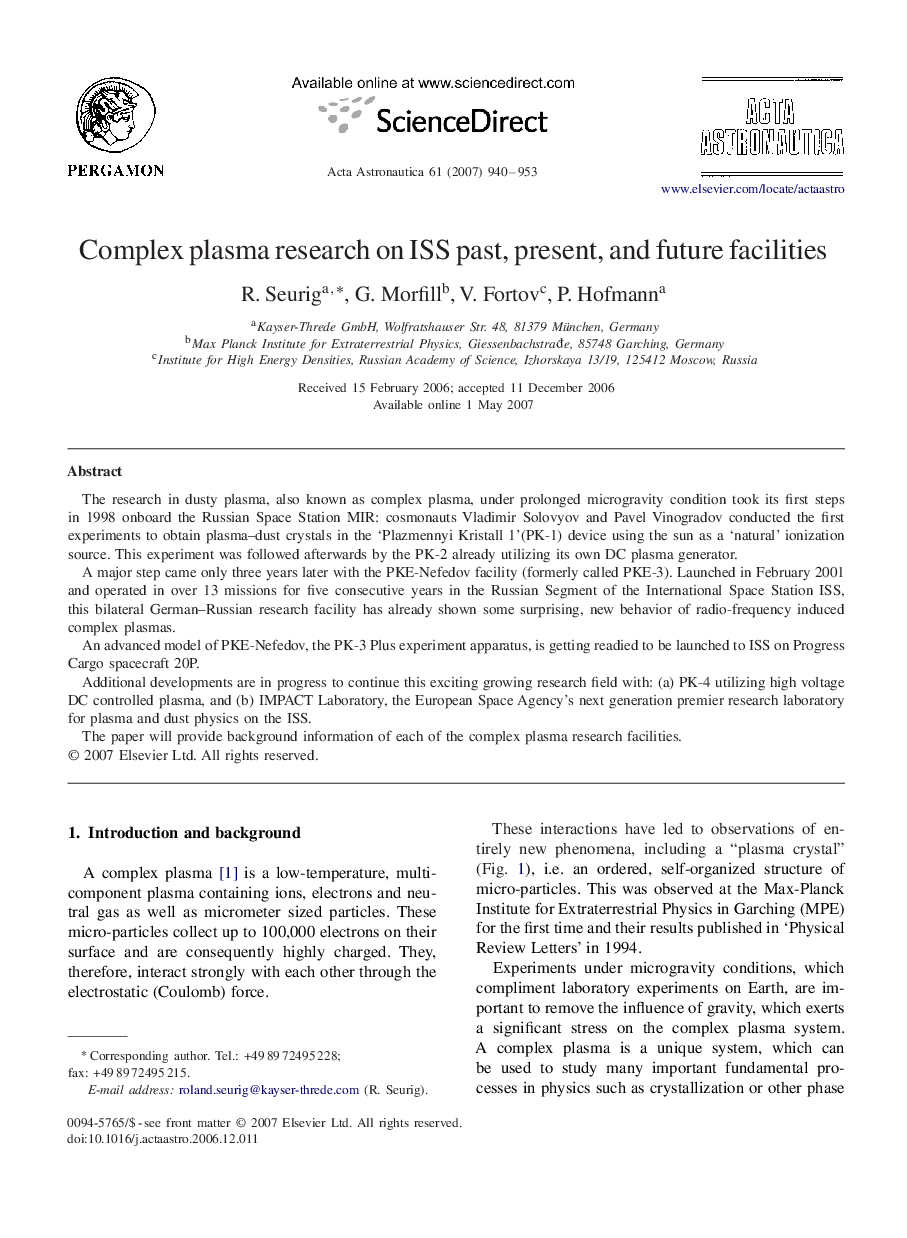| کد مقاله | کد نشریه | سال انتشار | مقاله انگلیسی | نسخه تمام متن |
|---|---|---|---|---|
| 1716972 | 1013420 | 2007 | 14 صفحه PDF | دانلود رایگان |

The research in dusty plasma, also known as complex plasma, under prolonged microgravity condition took its first steps in 1998 onboard the Russian Space Station MIR: cosmonauts Vladimir Solovyov and Pavel Vinogradov conducted the first experiments to obtain plasma–dust crystals in the ‘Plazmennyi Kristall 1’(PK-1) device using the sun as a ‘natural’ ionization source. This experiment was followed afterwards by the PK-2 already utilizing its own DC plasma generator.A major step came only three years later with the PKE-Nefedov facility (formerly called PKE-3). Launched in February 2001 and operated in over 13 missions for five consecutive years in the Russian Segment of the International Space Station ISS, this bilateral German–Russian research facility has already shown some surprising, new behavior of radio-frequency induced complex plasmas.An advanced model of PKE-Nefedov, the PK-3 Plus experiment apparatus, is getting readied to be launched to ISS on Progress Cargo spacecraft 20P.Additional developments are in progress to continue this exciting growing research field with: (a) PK-4 utilizing high voltage DC controlled plasma, and (b) IMPACT Laboratory, the European Space Agency's next generation premier research laboratory for plasma and dust physics on the ISS.The paper will provide background information of each of the complex plasma research facilities.
Journal: Acta Astronautica - Volume 61, Issue 10, November 2007, Pages 940–953